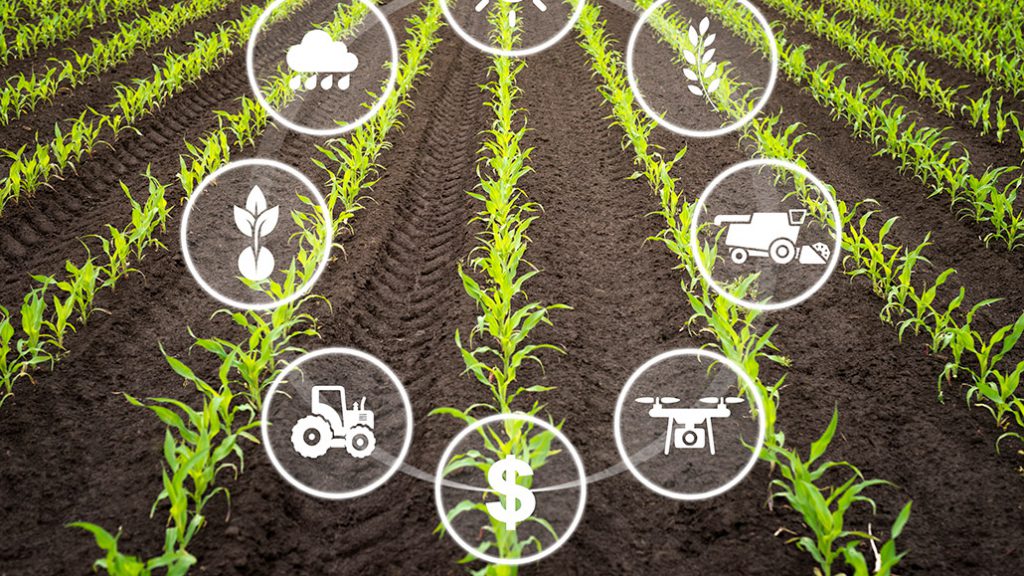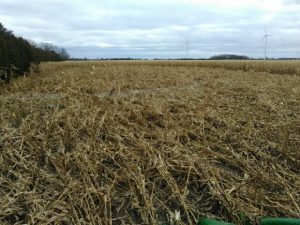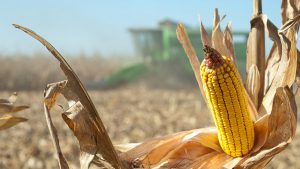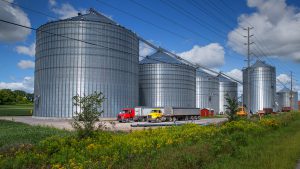A farm debt discussion
FINANCIAL RATIOS

CANADIAN HOUSEHOLD DEBT is on the rise. It’s all over the news, as financial consultants speculate about rising interest rates, soaring housing prices, and consumers constantly turning to credit to purchase the latest tech gadget, new car, or vacation. So where do farmers fit into the debt discussion?
“Farm debt is on the rise too,” confirms J.P. Gervais, vice-president and chief agricultural economist with Farm Credit Canada. “Canadian farm debt reached $106.3 billion in 2018. Farm businesses are growing and debt is being used as a tool. The debt service capacity of Canadian farmers remains healthy and their equity is growing, yet weaker farm income is a trend to monitor for the future.”
Gervais says that farm debt in Ontario totaled $27.7 billion in 2018, rising with overall Canadian farm debt at a rate of five to eight per cent over 10 years. This trend is expected to moderate.
“The most likely reason is a trend in slowing farm income,” explains Gervais. “Farmers haven’t seen a surge in livestock or crop marketing prices recently, resulting in flattened farm cash receipts, or weaker farm incomes. But that hasn’t slowed investments or general optimism in agriculture.”
CALCULATING DEBT
Crunching numbers and financial ratios is a good start to analyzing farm debt, but accounting ratios don’t tell the whole financial story.
“All farms are different and it’s important to look at the entire operation when considering a business’ financial health and debt situation,” says Tom Blonde, CPA and partner with Baker Tilly GWD. “Financial ratios need to be reviewed in the context of the farm’s long-term business cycle — whether a farm is in expansion, growth, or gearing down for retirement.”
Blonde suggests the best approach to evaluating a farm’s debt is to compare your financial situation each year to your own farm business.
“Reviewing finances year over year will give you a picture of your financial health and show you what direction your farm business is going,” says Blonde, who recommends an annual meeting with a farm accountant who can assist as a financial and business advisor. “Before you get worried about the numbers and ratios, take into account the overall economic reality of the situation — like the performance of crop prices, rising fuel costs or large one-time investments.”
Blonde reminds growers that, when it comes to finances, there are a lot of factors that influence a farm’s financial health that are out of an owner’s control. Interest rates, commodity prices, tax rates, and inputs will all change the numbers and overall picture of a farm business on paper and should be taken into consideration when comparing debt and financial well-being year over year.
Farmers can look at debt in a number of ways. Here are two financial ratios accountants and financial institutions look at when evaluating debt levels:
- Debt Service Coverage Ratio [income/debt service (loan principle plus interest)] – measures an operation’s cash flow available to service debt
- Debt to Equity Ratio [total liabilities/total equity] – measures the proportion of equity and debt a business is using to finance assets and demonstrates the ability to repay the debt
“It’s critical to watch these two ratios and ask yourself, as a farm business owner, if you can service your debt at any point in time,” says Gervais. “If the answer is no, you need to determine what can be changed to give your farm business more financial flexibility.”
IS ALL DEBT EQUAL?
“When considering big financial decisions that will impact debt, always consult a farm advisor outside of your immediate family unit,” advises Blonde, who explains that an accountant, financial advisor, or lender can provide a broader perspective on economic situations that could impact your business, or help evaluate how an investment will affect your bottom line.
Getu Hailu, a University of Guelph professor in the Department of Food, Agricultural and Resource Economics (FARE), suggests that all debt is not equal on the farm. His advice to growers is to invest, or take on necessary debt, but only if it increases productivity.
“The more productive and profitable you become should improve your ability to repay debt,” explains Hailu.
He says grain farmers need to carefully evaluate how large purchase decisions will impact the output of their farms. For example, equipment purchases should improve planting or harvesting efficiencies rather than being added to the lineup because they are the latest or the greatest. Farmers should consider leasing equipment or purchasing used if the equipment is necessary to improving the farm’s productivity but would cause too much financial headache to purchase outright. Hailu also suggests outsourcing activities to custom operators or agronomists if the financial strain is too tight to invest in equipment to get the job done. Rapid changes in technology means farmers can upgrade to newer advanced technology faster by outsourcing than they might if they owned their technology or equipment.
“A combine can be a good debt if the rate of return outweighs the cost of investment,” says Gervais. “The right capital investment can be a good debt, but it needs to increase productivity and profits. A bad debt is one that doesn’t add productivity, or there wasn’t a need for the purchase in the first place.”
GRAIN FARM FINANCIALS
The unpredictability of cash flow and input costs is what makes grain farms different in the world of accounting and financial statements.
“Grain farmers typically have more equipment than other farm types, leading to larger asset purchases. Despite the recent elimination of steel tariffs, the low Canadian dollar is still driving up the cost of machinery, and we’ve seen more grain farms take on higher capital costs,” says Blonde. He’s also seeing more grain farmers leasing or buying used field equipment to keep capital expenditures and debt loads down.
“I think farmers are taking more time to consider capital purchases now than they did recently in years with record grain prices. Farmers are making do with used, and even selling some equipment to free up cash flow to pay down debt or build a cash buffer to reduce the risk if commodity prices drop,” says Blonde.
ON-FARM EVALUATION
“I recommend all farmers manage their business with a CEO mentality,” says Gervais. “That means you admit you are not the expert on everything. Farmers need to surround themselves with people who are experts, such as lawyers, accountants, and financial advisors. And consult your expert team when you need to make a big decision.”
When it comes to making financial decisions, large capital purchases, or just reviewing finances and debt levels, the best advice to farmers is to test your financial stability by running scenarios and cash flow projections.
“Play with numbers in a spreadsheet to stress test your financials. Find out if you can still make your loan payments if interest rates rise by two per cent,” suggests Gervais. “Look at scenarios to find out what your financial numbers would look like if soybean prices collapse. Be prepared for different possibilities, even ones that might scare you.”
With so many variables impacting agriculture and grain farming, the financial future of the industry can’t be predicted. But Gervais is confident that, while there’s a chance interest rates may continue to rise, they will remain relatively low. “Farm debt will likely continue to grow in Canada, so we’ve got to grow income for the agricultural sector to remain financially strong too.” •
For more stats on farm debt, go to: https://www150.statcan.gc.ca/t1/tbl1/en/tv.action?pid=3210005101











